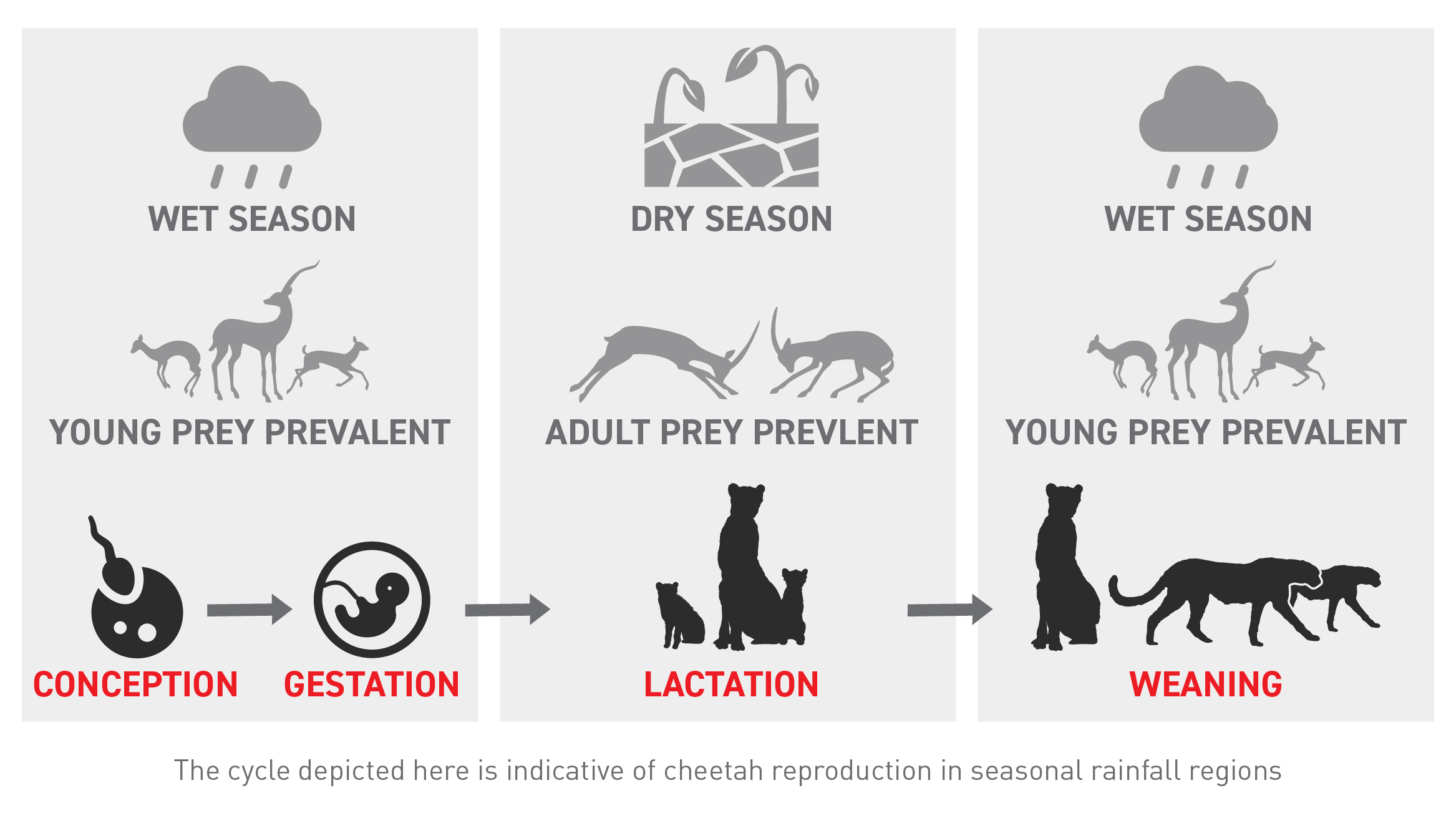Science Snippet:
Timing is everything – how cheetahs outsmart the seasons
By Erin Adams and Lizanne Roxburgh – Conservation Planning and Science Unit, Endangered Wildlife Trust (EWT)

For female mammals, the breeding season is the most energetically demanding time of the year. Each phase of reproduction (namely conception, gestation, lactation, and weaning), carries its own metabolic cost. To meet these demands, females must optimise their foraging and hunting strategies to align with the availability of accessible prey, which fluctuates throughout the year.
Outside the breeding season, cheetahs typically hunt adult prey during the dry season and switch to juveniles, which are easier to catch, during the wet season. Cheetahs inhabit a wide range of environments: some with distinct wet and dry seasons (seasonal), and others with rainfall throughout the year (aseasonal). The timing of rainfall strongly influences when different prey types become available. Since both breeding and hunting are energetically costly, synchronising these activities with prey availability is crucial.
In a recent study co-authored by scientists from the Endangered Wildlife Trust (EWT)*, researchers explored the question: when should “clever” cheetahs breed? The team analysed breeding patterns in cheetah populations across South Africa, Malawi, Tanzania, and Namibia. In total, they examined 142 litters from 21 seasonal environments and 106 litters from 19 aseasonal environments. Rainfall data was sourced from WorldClim (a global climate database) while prey breeding data was drawn from existing literature.
Their findings revealed that in regions with seasonal rainfall, over half (58.5%) of conceptions and gestations occurred during the wet season. This timing coincides with an abundance of juvenile prey, which are easier to catch. This is especially important when female cheetahs are heavier, and gestation demands on energy are high. Cubs born during this period enter the lactation phase in the dry season, when cheetah mothers can target larger prey. This is critical, as lactation is the most energetically expensive phase of reproduction, requiring females to consume at least 1.5 kg of meat daily to sustain themselves and their cubs. Targeting adult prey during this time offers a high return on energy investment.
The cubs are then weaned during the following wet season, when juvenile prey is again plentiful. For cheetahs, the timing of weaning appears to be the most influential factor in determining when to breed. It makes evolutionary sense as young cheetahs becoming independent during a period of abundant, easy-to-catch prey, which increases their chances of survival.
Interestingly, in aseasonal environments, where rainfall and prey availability are more consistent throughout the year, no distinct breeding pattern was observed.
This study offers fascinating insights into cheetah behaviour: cheetahs are remarkably adaptable in aligning their breeding cycles with prey availability. This suggests that cheetahs should be able to adjust their breeding if climate change causes prey species to shift the times at which they breed.

*Annear, E., Minnie, L., van der Merwe, V., & Kerley, G. I. (2025). When Should ‘Clever’ Cheetah Breed? Seasonal Variability in Prey Availability and Its Effect on Cheetah Reproductive Patterns. Ecology and Evolution, 15(6), e71655.
